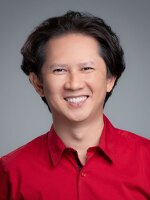When the news broke Wednesday that San Diego County District Attorney's office won't be filing charges against three former San Diego State football players in an alleged gang rape off campus, Eliana Satkins said she was disappointed.
“It's really concerning because it kind of gave us all loss of trust and hope in the school and also just how the whole system works, especially as a girl on this campus. It's scary," she said.
The SDSU student hopes the decision won’t deter assault victims from speaking out. Others question why no charges were filed when the DA's office clearly has evidence something happened.
- What we know about the DA's decision to not file charges in SDSU rape case
- Outside auditors will examine SDSU's handling of sexual assault and harassment complaints
- A look into SDSU athletes' sexual violence prevention training
- Students react to SDSU's handling of rape allegations
- Civil case accusing Matt Araiza of rape is unusual legal strategy, expert says
- Woman who accused San Diego State football players of rape speaks out
- SDSU football coach addresses rape allegations, says he won't 'tolerate' behavior
"If someone was raped, someone's got to get charged for that. That's a messed-up crime, man," said Harry Carter, an international student from Australia. "That shouldn't just go without anyone noticing."
But it’s not as simple as that, said Mark Deniz, a former prosecutor with 10 years of experience who now works in private practice. He said prosecutors have a high bar to cross when they file charges.
“They have to make a decision that one, are charges going to be successful if we file them? Can we prove this beyond a reasonable doubt?" he said. "They don't want to file charges that cannot be proven.”
The DA's office said it combed through more than 35 witness testimonies, examined the Sexual Assault Response Team (SART) exam report, the DNA evidence and more than four terabytes of data, including cell phone video of the incident.
Deniz said it’s not about how much evidence the DA has. What matters is how the evidence can support every aspect of the case.
“If it falters in that one spot, it's almost like a cook. If they don't have an ingredient, they can't cook it,” he said.
Because the alleged victim was intoxicated at the time, Deniz said it might have been hard for prosecutors to establish a clear timeline, even with video evidence.
“When you cannot establish that time frame, it really sets a prosecutor behind in establishing their theory of the case,” he said.
Resources at SDSU for sexual assault victims
• SDSU Counseling & Psychological Services: (619) 594-5220 (non-emergency)
• Counseling Access & Crisis Line: (888) 724-7240, www.sa.sdsu.edu/cps/
• Student Health Services, Calpulli Center: (619) 594-5281, shs.sdsu.edu/index.asp
• SDSU Police Department: (619) 594-1991
• Center for Community Solutions: (888) 385-4657 (bilingual rape crisis hotline), ccssd.org
Kerry Armstrong, Matt Araiza's attorney, said his client was very emotional when he heard the news. Araiza was among the three men accused of gang-raping the then 17-year-old girl at a Halloween party on Oct. 16, 2021.
“We talked quite a bit last night, and he's obviously very excited about the criminal case being gone, rejected. Now he has to deal with the civil lawsuit," Armstrong said.
Araiza was drafted by the Buffalo Bills in April and was released by the team when the young woman filed a civil suit naming him as one of the assailants.
The suit alleges Araiza took the girl to a side yard of the house, had sex with her and then took her to a bedroom inside the house where at least three other men, including Zavier Leonard and Nowlin "Pa'a" Ewaliko, were present. According to the suit, the girl was thrown onto a bed, where she was repeatedly assaulted.
Dan Gilleon, attorney for the young woman, known only as Jane Doe, said he will press on with the civil suit, where the burden of proof is lower.
A preliminary hearing is set for Jan. 6.
-
No charges will be filed against any of the SDSU football players accused of a gang rape on campus last year.
-
The Pentagon is finishing a review of its policies regarding suicide, and although the number of military suicides declined slightly last year, it remains a major problem.









